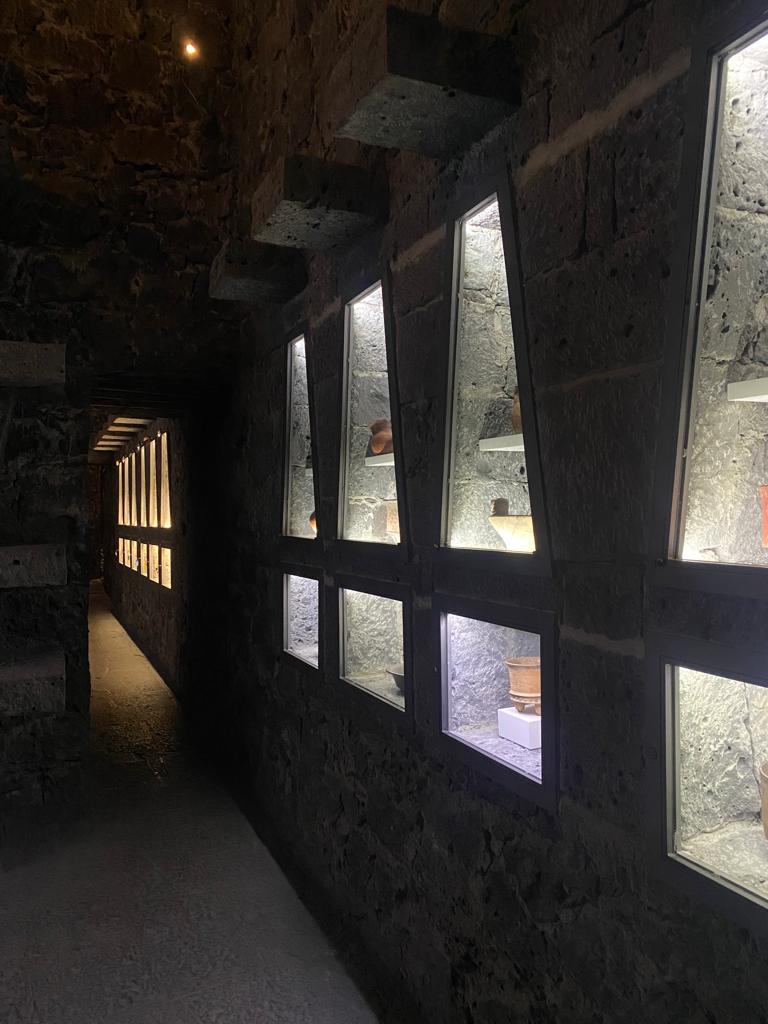ll- Tecalli
Desde el dilema de Segismundo -el hombre cautivo en un calabozo-, que vive en el mundo inmaterial de los sueños y solo encuentra la verdad al salir a la luz, hasta la explicación que da Susan Sontag sobre el propio origen de la imagen y su representación, el conflicto entre luz y oscuridad en una cueva ha sido utilizado para explicar distintas dimensiones de nuestra realidad.
El Anahuacalli es un templo que acoge al día y a la noche. Esta dualidad coexiste con paciencia y es más evidente en la planta baja, donde Rivera replicó la sensación de entrada al inframundo. Para ello, Diego recurrió a una piedra traslúcida, ambarina y llena de textura: el tecalli -que significa piedra-casa. Si bien -explica Rivera- en un inicio los arqueólogos creyeron que en las construcciones antiguas no había ventanas y que las habitaciones eran sombrías, después comprobaron que siempre hubo tecalli. Este se utilizaba cerca del techo en los jacales, esas casas ancestrales que fueron gran influencia para la construcción de este museo.
Aquí el tecalli filtra intermitentemente el sol del exterior y genera una luz difusa, dorada, que danza a través del inframundo. Esta luz fue la que motivó a Luciano Matus a proponer su segunda intervención: un cambio sutil en la iluminación artificial -colocada en las décadas posteriores a la muerte de Diego y que, por mucho tiempo, no honró esa calidez del tecalli y la pureza del sol que baña las salas.

ll- Tecalli
Since Segismundo – the captive man in a cell – who lives in the immaterial world of dreams and only finds the truth when coming out to the light, to the images own origin and representation according to Susan Sontag, the conflict between light and darkness in a cave has been used to explain to us the different dimensions of our reality.
The Anahuacalli is a temple that receives in its walls day and night. This duality that coexists is most evident in the first floor of the museum where RIvera replicated the sensation of the entrance into the underworld. To do this, he turned to Tecalli – which means “stone house” – a beautiful thing according to Diego because where archeologists thought there weren’t windows and they were dark rooms, there always was ‘Tecali’. This was used near the roof in the huts, the ancestral house where the inidigenous had lived for centuries and is a great influence in the construction of this building.
Here the tecalli intermittently filters the sun from outside and generates a golden light that dances in the underworld. This light was the motivation for Luciano Matus to propose his second intervention: a subtle change in the artificial illumination seen in the decades following the death of Diego who for a long time didn’t honor this warmth of tecalli and the purity of the sun that bathes the rooms.